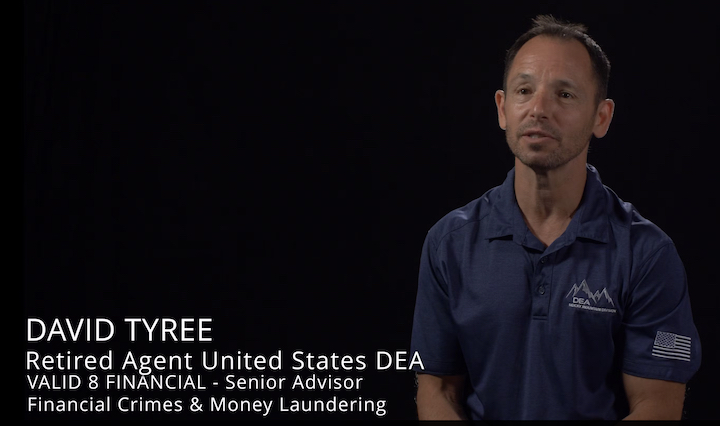The Evidence Ledger
From Chicken Wings to a Quarter-Billion Dollar Web: How Modern Fraud Outpaces Traditional Investigation

In early 2024, a bizarre news story broke out of Illinois: a school official had stolen $1.5 million from a child nutrition program—not by siphoning funds into hidden accounts, but by ordering 11,000 cases of chicken wings and reselling them for personal profit. Vera Liddell, the 68-year-old food service director for Harvey School District 152, used her position to place orders with Gordon Food Services while billing the district, then picked up the wings in a district cargo van for resale. The headlines practically wrote themselves. A "chicken wing heist"? It was absurd. It was brazen. And it was a reminder that even modest fraud can still drain public resources when oversight falls short.
The discovery came through a routine mid-year audit when the district realized food costs had exceeded the annual budget by $300,000 despite being only halfway through the school year. The business manager found invoices for "massive quantities of chicken wings, an item that was never served to students because they contain bones". What made the scheme particularly egregious was its timing—occurring during the COVID-19 pandemic when more than 80% of the district's 1,600 students qualified as low-income and were depending on remote meal programs.
Turns out, the chicken wing heist was just an appetizer.
What followed was far more elaborate—and far more costly.
Who Was Feeding Our Future?
Feeding Our Future was a Minnesota-based nonprofit founded in 2016 and responsible for administering federal child nutrition programs during school closures, including the Child and Adult Care Food Program (CACFP) and the Summer Food Service Program (SFSP). Led by Executive Director Aimee Bock, the organization expanded rapidly during the pandemic—coordinating hundreds of meal sites and distributing tens of millions in federal funds. The organization went from receiving approximately $3.4 million in federal funds in 2019 to nearly $200 million in 2021.
But behind the scenes, investigators say Feeding Our Future became the hub of a sprawling fraud operation. Staff allegedly accepted bribes to approve fraudulent vendors, fabricated documentation to justify inflated meal claims, and laundered funds through shell companies and offshore accounts. The organization's nonprofit status made it harder for state agencies to intervene, and legal threats were used to delay investigations.
The Minnesota Department of Education's oversight failures created the perfect storm for fraud . A legislative audit found that MDE failed to act on warning signs known prior to the pandemic, didn't effectively exercise its authority to hold Feeding Our Future accountable, and was ill-prepared to respond to emerging issues. Despite identifying serious operational issues during a 2018 review, MDE failed to follow up adequately.
As of 2025, more than 70 individuals connected to the scheme—including Bock and her co-conspirator Salim Said—have been federally charged. In March 2025, both Bock and Said were found guilty on all counts in their trial, with the judge immediately revoking their release pending sentencing. The Department of Justice has called it the largest pandemic-era fraud case in the United States.
Fabricated Documentation Engineered for Scale
At the core of the scheme were thousands of fraudulent attendance rosters and meal logs—engineered not just to deceive, but to scale. Using automated tools, conspirators generated spreadsheets with randomized data, giving the appearance of demographic diversity. An IRS special agent testified that investigators found "very low percentages of rosters that actually represented real kids".
The sophistication was remarkable. Children's ages were shuffled between 7 and 17 using spreadsheet formulas that randomly generated ages, and fictional names like "Putify Nop" and "Cerresso Fort" (actually an adult boxing coach who owned SIR Boxing Club) were inserted to fill quotas. In several instances, the same child would appear with different ages on consecutive pages of rosters.
Some operations went so far as to claim they were serving thousands of children daily from spaces with no plausible capacity. Hibo Daar's Northside Wellness Center claimed to serve 40,000 meals weekly to children from a small business park, while some invoices claimed purchases of 3,000 gallons of milk in a single month. One small restaurant kitchen reported preparing over 3,000 meals a day, while S&S Catering claimed to have served 1.2 million meals in just eight months.
These claims often went unchecked, in part because the pandemic had suspended many in-person site visits. With oversight relaxed, fabricated documentation slipped through undetected, aided by the speed and volume of automation.
Layered Financial Obfuscation
Once funds were disbursed, they were rapidly laundered through a web of shell companies—more than 200 entities, many registered to vacant storefronts or residential addresses. These shell vendors billed for services they never performed and were reimbursed millions in federal funds.
The financial engineering was breathtaking in its complexity:
- S&S Catering collected over $16 million in reimbursements—yet investigators found they spent only $465,000 on actual food, with owner Qamar Ahmed Hassan using $2.4 million to purchase commercial real estate and $505,000 to buy an apartment in Kenya.
- Empire Cuisine and Market received $11.1 million, with $29,000 allegedly used to buy a Porsche and $575,000 to purchase a house, while a partner spent over $1 million on undeveloped lots near Prior Lake.
- Najmo Ahmed laundered $1.3 million through her personal bank accounts, transferring over $1.1 million to foreign textile companies including Shaoxing Aifan Textile Co., while funding a lavish lifestyle with purchases from Burberry, Louis Vuitton, and Canada Goose.
Funds flowed through offshore accounts, including Chinese textile companies and Dubai-based import/export firms. Kickback payments were disguised as "consulting fees," with at least $140,000 in bribes paid to nonprofit employees in exchange for approving inflated claims.
The scheme created a closed-loop laundering system. Shell companies invoiced fictitious meal providers. Providers submitted claims. Reimbursements came through. And funds were quickly siphoned into real estate, luxury goods, and international transfers—all while maintaining the appearance of a functioning operation.
Institutional Capture and Collusion
Feeding Our Future didn't just fail to prevent the fraud — it actively enabled it.
Internal investigations revealed that staff accepted bribes to approve claims without conducting required site visits. Bock used legal threats to push back against state agencies that questioned inflated counts, successfully delaying investigations for months. The organization's payments from the Minnesota Department of Education increased by a staggering 2,800% between 2020 and 2021.
Even the nonprofit's board of directors was fabricated. Three supposed board members testified at trial—two bartenders and a city mechanic—who knew nothing about their alleged status, had never attended a board meeting, and lacked any qualifications to serve on a nonprofit board.
By cloaking itself in nonprofit status, the organization deflected scrutiny and stalled audits. What should have been a safeguard became a shield, with Bock's attorney making claims of racism to silence and intimidate state investigators.
Exit Plans and Evasion Tactics
Even as indictments loomed, participants were planning their exits. Some had already started moving funds into assets and accounts beyond reach:
Hibo Daar attempted to flee the U.S. with nearly $1.7 million in cash and checks, intercepted at Minneapolis-St. Paul airport en route to Dubai just days after FBI raids made headlines . Her Northside Wellness Center had received over $1.7 million in taxpayer funds while spending only a "tiny portion" on actual food.
Najmo Ahmed laundered over $1.3 million through international trade companies and designer retailers, transferring funds to foreign textile companies while maintaining a lavish lifestyle.
Fraud proceeds were used to purchase everything from Minnesota Timberwolves luxury suites to vacation homes and commercial real estate—assets designed to obscure the flow of funds and limit traceability.
These weren't acts of desperation. They were calculated exits, revealing just how far ahead some participants were thinking—and how hard it can be to unwind the damage once funds start moving across international borders.
The Modern Fraud Landscape: What This Means for Investigators
The Feeding Our Future case is more than just a headline-grabbing scandal. It's a blueprint for how large-scale fraud operates in today's landscape, revealing four critical challenges that traditional investigative methods struggle to address:
- Synthetic Documentation at Industrial Scale: Automated tools now generate thousands of falsified records with randomized data, creating the appearance of legitimacy while overwhelming manual verification processes.
- Layered Financial Obfuscation: Shell companies and international transfers create maze-like money trails designed to evade traditional audits, with funds moving through hundreds of entities across multiple jurisdictions.
- Institutional Weaponization: Nonprofits and legal threats are used to dismantle internal controls and delay investigations, turning oversight mechanisms into shields for fraudulent activity.
- Cross-Border Asset Flight: International money laundering and rapid asset conversion complicate recovery efforts, with perpetrators planning exits well before detection.
For forensic teams and government investigators, the message is clear: this is the new norm. Traditional methods of manually cross-referencing documents and tracing payments simply cannot keep pace with automated fraud generation and complex international money flows.
The Technology Gap in Financial Investigation
In cases like the Illinois chicken wing theft, traditional detection methods eventually worked—a routine budget audit caught the discrepancy. But that approach required the fraud to become large enough to notice and relied on someone asking the right questions at the right time.
In the Feeding Our Future case, investigators weren't dealing with a few rogue transactions—they were facing millions of dollars spread across hundreds of vendors, dozens of financial institutions, and multiple jurisdictions. Claims were supported by thousands of documents—many of them falsified, duplicated, or deliberately obfuscated.
The scale and sophistication of modern fraud schemes demand technological solutions that can process vast amounts of data, identify patterns across complex networks, and flag anomalies that human investigators might miss. When fraud becomes industrialized, investigation tools must evolve to match that sophistication.
The challenge isn't just volume—it's verification. Modern fraud schemes excel at creating documentation that appears legitimate on surface inspection but fails under deeper analysis. Automated systems that can verify transactions against supporting evidence, flag duplicate or suspicious patterns, and map relationships between entities become essential tools for staying ahead of increasingly sophisticated schemes.
Financial crimes investigation has reached an inflection point. The choice is clear: evolve investigative capabilities to match the sophistication of modern fraud, or continue to play catch-up with criminals who are already leveraging technology to stay several steps ahead.
In an era where fraudsters use automation to generate fake documentation and shell companies to obscure money trails, investigators need technological tools that can process complex data relationships, verify supporting documentation at scale, and transform overwhelming evidence into actionable intelligence. The future of financial investigation isn't just about following the money—it's about having the right technology to keep pace with those who are stealing it.
Whether investigating corporate fraud, government program abuse, or complex money laundering schemes, today's forensic professionals need sophisticated tools that can match the scale and complexity of modern financial crimes. The cases detailed above demonstrate that traditional manual methods, while still valuable, are no longer sufficient for the challenges investigators face in our increasingly connected and automated world.


















